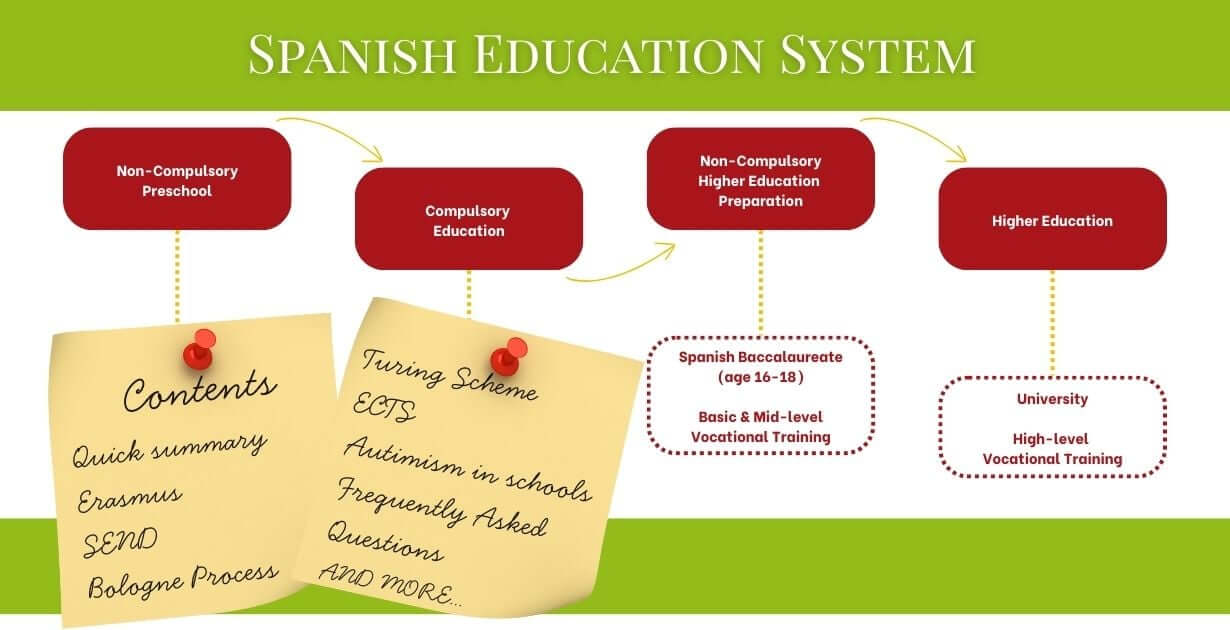Table of Contents
- Introduction
- A Quick Word From The Director
- Summary Of Education in Spain
- Primary Education
- Secondary Education
- Higher Education
- International Schools
- A More In-Depth Look At The Education System In Spain
- Regional variations
- Challenges and Improvements
- Erasmus+, Bologna Process, Turing Scheme, and ECTS
- The Bologna Process for Higher Education in Europe
- Erasmus+ Program
- What is the Turing Scheme?
- European Credit Transfer and Accumulation System
- SEND Facilities in Spain: Supporting Students with Special Educational Needs
- Is autism recognised in the Spanish education system?
- Schools in and around the Guadalhorce Valley
- FAQs
Introduction
This article gives you an overview of the education system in Spain, covering primary, secondary, and higher education. It explains the structure, requirements, and opportunities available to students, including international education options and important information about Spanish SEND (Special Educational Needs and Disabilities) facilities and resources for further reading and research.
Additionally, it includes key insights into public, private, and international schooling, as well as vocational training pathways.

A Quick Word From The Director
Kelly Summerell, Director of Mediterranean Homes and her brother, Tyler Summerell, Sales and After-Sales, both have extensive personal experience of the Spanish educational system - having gone through the Spanish public educational system themselves. With children of her own, Kelly also understands just how daunting it can be when deciding which school to send your children to.
So don't worry! The whole team here at Mediterranean Homes are all here to help you make the right choices. Having been an estate agent in Spain since 2004, Kelly has already advised hundreds of clients on everything from the best schools to the best places to eat and drink!
Mediterranean Homes is an estate agency based in Coín, Andalucia, that specialises in the selling of rural properties. We sell all types of properties located in the inland area West of Málaga, known as the Guadalhorce Valley. Check out the Areas We Cover page to read all about the beautiful towns in which we have the pleasure of working.
Summary Of Education in Spain
Spain offers a comprehensive education system that includes public, private, and international schools. Education is mandatory for children between the ages of 6 and 16, and the system is divided into several stages, each with its own requirements and progression criteria.
Primary Education
Structure and Duration
Primary education in Spain, known as "Educación Primaria," lasts six years and is divided into three cycles. It is compulsory and free in public schools.
Subjects and Curriculum
The curriculum includes core subjects such as Mathematics, Spanish Language, Science, Arts, and Physical Education. Some regions offer additional instruction in local languages.
Secondary Education
Compulsory Secondary Education (ESO)
Secondary education is divided into two stages. The first stage, "Educación Secundaria Obligatoria" (ESO), is mandatory and lasts four years.
Bachillerato
Students who complete ESO can opt for "Bachillerato," a two-year pre-university course focusing on humanities, sciences, or arts.
Higher Education
University Admission
University entry in Spain requires passing the "Selectividad" exams. Universities offer a variety of degree programmes, including Bachelor's, Master's, and Doctoral studies.
Vocational Training
Spain also provides vocational training courses known as "Formación Profesional" (FP), which prepare students for specific careers.
International Schools
Options for Expats
Spain has numerous international schools that offer British, American, and other curricula, catering to expatriate families.
Costs and Benefits
International schools typically charge tuition fees but provide globally recognised qualifications and bilingual education.
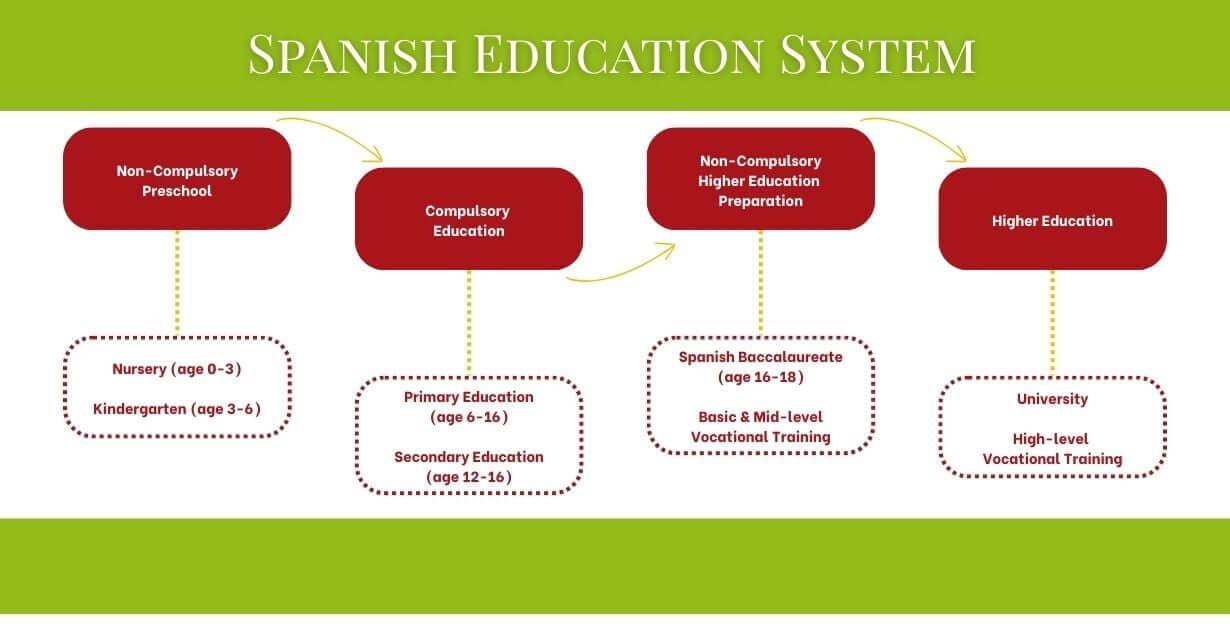
A More In-Depth Look At The Education System In Spain
Education in Spain is as diverse and dynamic as its culture. The Spanish education landscape is designed to meet the requirements and backgrounds of students from early life to higher education, with a dedication to diversity. Here's a closer look at the school system in Spain.
Early Childhood Education (Educación Infantil)
- Ages: 0 to 6 years.
- Stages: Divided into two cycles: the first for children aged 0 to 3 years (non-compulsory) and the second for ages 3 to 6 years (also non-compulsory but widely attended).
- Focus: This stage emphasizes social skills, emotional development, and basic learning, laying a strong foundation for future education.
Primary Education (Educación Primaria)
- Ages: 6 to 12 years.
- Duration: 6 years, organized into three cycles of two years each.
- Curriculum: Covers essential subjects such as Spanish language and literature, mathematics, natural sciences, social sciences, arts, and physical education. It aims to develop a well-rounded education.
Secondary Education (Educación Secundaria Obligatoria - ESO)
- Ages: 12 to 16 years.
- Duration: 4 years of compulsory education.
- Curriculum: Students engage with core subjects while having the option to choose electives. At the end of ESO, they receive a certificate known as the Graduado en Educación Secundaria, which is crucial for further education.
Post-Secondary Education
The below are optional further education options.
- Bachillerato
- Ages: 16 to 18 years.
- Duration: 2 years and designed for students aiming for higher education.
- Focus: Prepares students for university with specialized tracks in sciences, humanities, and more.
- Vocational Training (Formación Profesional):
- Options: Offers practical and theoretical training for specific careers, providing a pathway into the workforce.
Higher Education
Spain boasts a rich higher education landscape, with numerous public and private universities. The system offers bachelor's, master's, and doctoral degrees, adhering to the pioneering Bologna Process, launched in 1999, which standardizes higher education and has transformed the way universities and academic qualifications are structured across Europe, enhancing student mobility.
Regional variations
With 17 autonomous communities, Spain's education system benefits from regional management, resulting in differences in curricula, languages of instruction, and educational policies. Many regions offer schooling in both Spanish and regional languages, highlighting the country's linguistic diversity.
Language of Instruction
While Spanish is the primary language of instruction, several regions encourage bilingual education, which allows pupils to study both Spanish and their regional language, such as Catalan, Basque, or Galician.
Inclusiveness and Access
Spain focusses on inclusivity, striving to cater to pupils with special needs while also assuring equal access to education for all children. Ongoing reforms are aimed at reducing educational inequities and improving overall educational quality.
Challenges and Improvements
Despite its achievements, the Spanish education system has issues such as regional quality discrepancies, high dropout rates in some areas, and a need for modernisation. Reforms are being implemented to increase curriculum relevance, teacher training, and infrastructure, to make education more equal and effective.
Spain's educational system reflects the country's cultural wealth and regional variety. It aims to create opportunities for all by implementing a comprehensive framework that supports students from early life to higher education. Whether you're in primary school or getting ready for university, Spain's educational landscape provides a plethora of resources and opportunities.
Erasmus+, Bologna Process, Turing Scheme, and ECTS
When it comes to studying in Europe, numerous major programs and frameworks exist to make higher education more accessible, flexible, and internationally recognised. The Erasmus+ Program, the Bologna Process, the Turing Scheme, and the European Credit Transfer and Accumulation System (ECTS) all play important roles in developing international educational experiences. Whether you're a student wishing to study abroad, a university navigating international relationships, or an academic attempting to understand how the European education system works, these projects are critical to fostering a more unified and interconnected academic world.
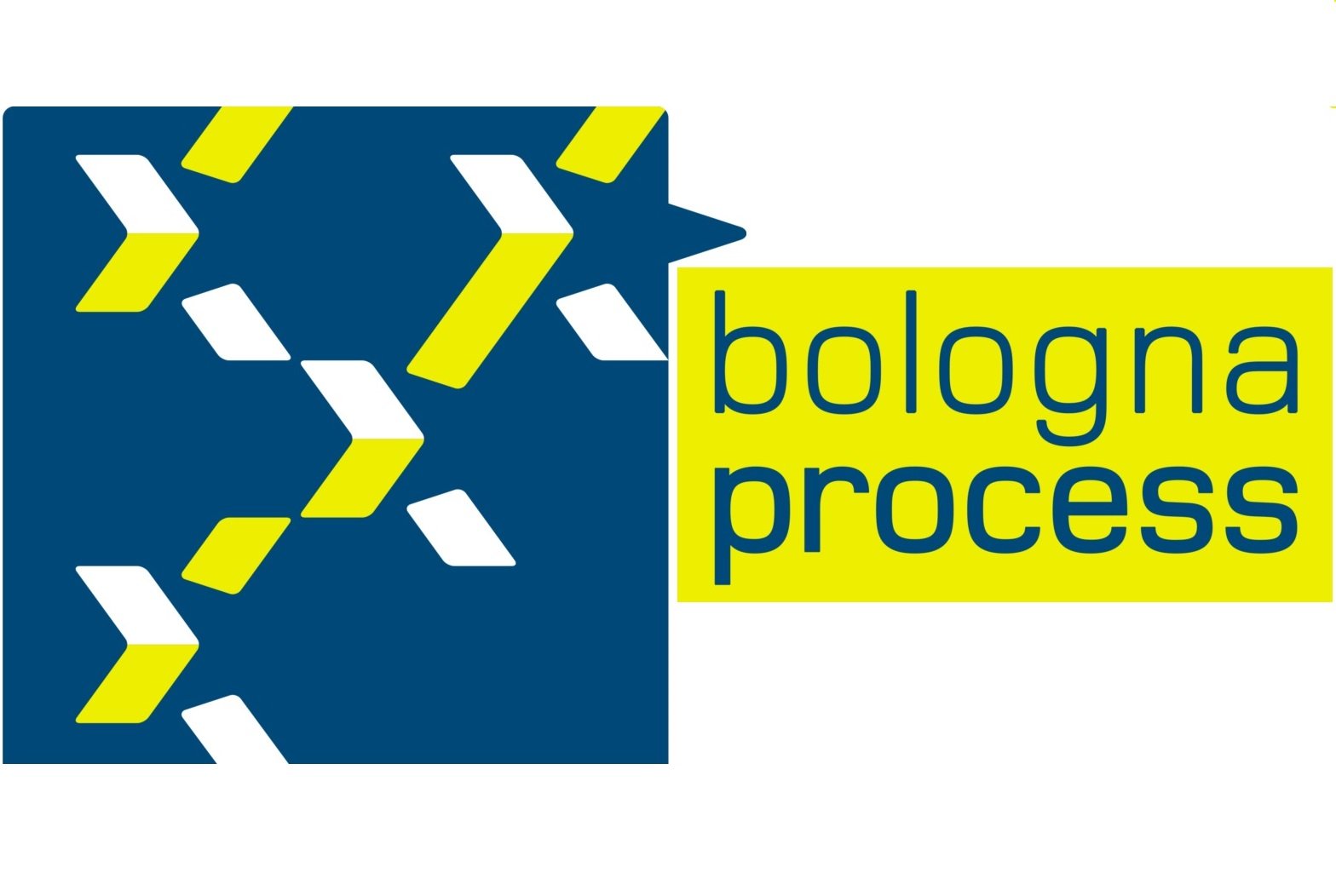
The Bologna Process for Higher Education in Europe
If you've ever considered studying in Europe or pursuing an international job, you've most likely heard the term Bologna Process.
What is the Bologna Process?
The Bologna Process is a set of changes aiming at creating the European Higher Education Area (EHEA). Its primary purpose is to make it easy for students to travel across nations, study at different institutions, and have their degrees recognised internationally.
Since its start, the Bologna Process has involved more than 40 European countries, and its influence has spread to Eastern Europe, Central Asia, and the Caucasus.
Main goals of the Bologna Process
Establish a unified European Higher Education Area: One of the key objectives was to ensure that the higher education systems of the participating nations are compatible and comparable. This allows students to move between nations with confidence that their qualifications will be recognised regardless of where they studied.
Establish a clear degree structure. The Bologna Process created a system of three academic cycles:
- Bachelor's degree (typically 3 years)
- Master's degree (typically 1-2 years)
- Doctorate (PhD) (typically 3-4 years)
This system serves as a standard for comparing the educational framework across Europe.
Adopt a Credit System: The Bologna Process introduced the European Credit Transfer and Accumulation System (ECTS). The idea behind ECTS is to provide a clear way to measure and compare the workload and learning outcomes of different courses. Each credit represents a certain number of hours of study, helping ensure that credits earned in one country are transferable to another, facilitating student mobility.
Ensure Quality Assurance: The Bologna Process emphasizes the importance of quality assurance in higher education. Participating countries are encouraged to establish national agencies responsible for monitoring and assessing the quality of universities and academic programs. This ensures that universities meet high standards and continually improve their educational offerings.
Why Is the Bologna Process Important?
Increased Student Mobility: By standardizing degree structures and introducing the ECTS system, the Bologna Process has made it easier for students to move between countries. Whether participating in exchange programs like Erasmus, studying abroad, or pursuing a degree in a foreign university, students now have greater opportunities to experience different cultures and education systems.
Improved Transparency and Recognition of Degrees: With the adoption of the three-cycle degree system and the ECTS, it’s now much easier to understand and compare degrees from different universities. This transparency ensures that graduates can move across borders and be confident that their qualifications will be recognized in other European countries, and beyond.
Better Quality of Education: The emphasis on quality assurance and accountability has led to improvements in the overall standard of education in European universities. Regular assessments ensure that universities continually improve and maintain high teaching and research standards.
Boosting Employability: By creating a more unified and transparent higher education area, the Bologna Process helps improve employability throughout Europe. Employers now have a better understanding of what specific degrees mean, regardless of where a graduate earned them. This has opened up more opportunities for graduates to work across different countries and sectors.
Challenges and Criticism
Differences in Implementation: Not all countries have implemented the reforms in the same way, and some nations have faced difficulties aligning their systems with the Bologna framework. This has led to discrepancies in how higher education is structured across countries, causing some confusion for students and employers.
Pressure on Universities: Some critics argue that the three-cycle degree system places too much pressure on students to graduate quickly, potentially sacrificing the depth and quality of education. With an emphasis on employability and efficiency, universities may face challenges balancing academic rigor with the demands of the labour market.
Cultural Differences: While the Bologna Process aims to standardize education across Europe, it does not always account for the unique educational traditions and cultural contexts of different countries. Some argue that the one-size-fits-all approach can undermine the diversity of higher education systems.
Global Influence of the Bologna Process
Though the Bologna Process was originally intended for Europe, it has had an impact on higher education institutions around the world. Countries in Eastern Europe, the Caucasus, and Central Asia have implemented components of the Bologna reforms to align their educational systems with those of Europe.
The Bologna Process has also sparked a broader conversation about higher education's future, with discussions regarding global collaboration, mobility, and academic standard harmonisation continuing to affect education policies around the world.
The Bologna Process was essential in reforming higher education in Europe, making it more transparent, adaptable, and movable. Its emphasis on degree structures, credit systems, and quality assurance has enabled students to pursue academic and professional possibilities across borders with more confidence.
Do you need a visa to study in Spain whilst participating in the Bologna Scheme?
If you are participating in the Bologna Process or studying in Spain as part of an exchange program or under a European Union (EU) agreement, the visa requirements will depend on your nationality and the specific details of your stay.
Here’s a breakdown of the visa requirements based on different scenarios:
1. EU/EEA/Swiss Citizens
If you are a citizen of a country in the European Union (EU), European Economic Area (EEA), or Switzerland, you do not need a student visa to study in Spain, including for programs aligned with the Bologna Process.
You will, however, need to register with the Spanish authorities if your stay exceeds three months. This involves applying for a residence certificate (Certificado de Registro de Ciudadano de la Unión) at the local Foreigners Office (Oficina de Extranjería) or police station.
The process is simple and typically involves providing proof of enrolment in a recognized institution, proof of financial support, and health insurance.
2. Non-EU Citizens
If you are from a non-EU country, the situation is different. You will generally need a student visa to study in Spain, including if you are participating in a Bologna Process program or an exchange scheme, regardless of whether the program is part of Erasmus+, a bilateral agreement, or another academic exchange.
Types of Visas for Non-EU Citizens:
- Short-term Student Visa (up to 90 days): This visa is for students staying in Spain for less than three months. It is usually applicable if you're coming for short courses, research programs, or internships.
- Long-term Student Visa (over 90 days): If your course of study lasts longer than three months, you will need a long-term student visa. This visa is typically required for undergraduate, master's, or PhD programs.
Required Documentation: For both types of visas, you will need to submit proof of:
- Admission to a Spanish institution (enrolment letter).
- Proof of financial means to support yourself during your stay (bank statements, scholarship details, etc.)
- Health insurance coverage valid in Spain.
- A valid passport with at least six months of validity remaining.
Application Process
You will need to apply for your student visa at the Spanish consulate or embassy in your home country before traveling to Spain.
Once you arrive in Spain, you may need to register with the police and obtain a Foreigner’s Identity Number (NIE) if your stay exceeds six months.
3. Erasmus+ or Exchange Programs
If you are participating in an Erasmus+ exchange or similar program through a university or another formal agreement (for example, under the Bologna Process), the same visa rules generally apply to non-EU students: you will need a student visa if your stay is longer than 90 days.
However, many exchange programs offer additional guidance on visa applications, so it is advisable to check with your home university or the Spanish institution where you will study to get specific instructions.
- EU/EEA/Swiss students do not need a visa to study in Spain but must register with local authorities if staying longer than three months.
- Non-EU students need a student visa for any stay longer than 90 days, including for Bologna Process-related programs.
Make sure to check with the Spanish consulate in your home country or the international office at your university for the most up-to-date and specific visa requirements related to your particular program.
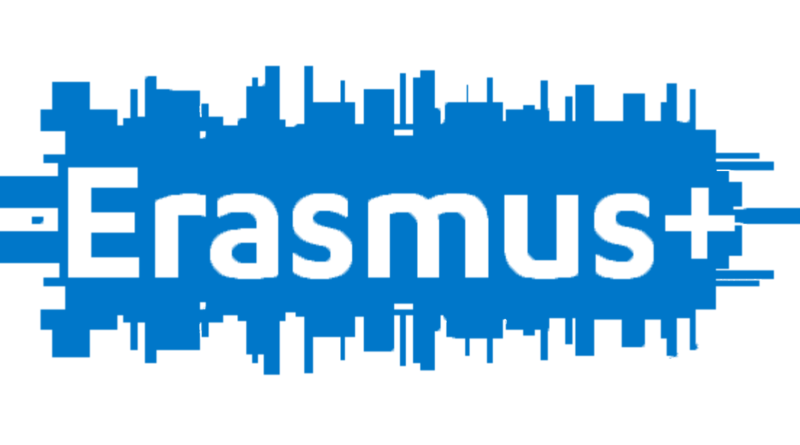
Erasmus+ Program
The Erasmus+ Program is a cornerstone of European education, allowing students, professors, and institutions to participate in international collaboration and cultural exchange. This program, which was launched in 2014, builds on the original Erasmus initiative's focus on student mobility.
Key Features of Erasmus+
1. Student Mobility
- Study Abroad: One of the standout features of Erasmus+ is the opportunity for students to study in another European country for 3 to 12 months. This experience not only enhances academic knowledge but also fosters personal growth and cultural understanding.
- Internships: Students can also take part in internships abroad, gaining practical experience that can significantly boost their employability and professional skills.
2. Teacher and Staff Exchanges
Erasmus+ supports mobility for educators as well, allowing teachers, trainers, and staff from higher education, vocational education, and schools to work and learn in different educational environments. This exchange of ideas and practices enriches the educational experience for both staff and students.
3. Partnerships and Cooperation
The program encourages collaboration between educational institutions across Europe. Schools, universities, and organizations can engage in joint projects, develop curricula together, and share resources, promoting innovation and improving the quality of education.
4. Youth and Community Projects
Erasmus+ also reaches beyond traditional education by supporting youth exchanges and volunteering opportunities. These projects promote social inclusion, active citizenship, and cultural awareness among young people, fostering a sense of community and belonging.
5. Funding and Grants
Participants in the Erasmus+ program can benefit from various forms of funding, which may cover travel costs, living expenses, and tuition fees. The amount of financial support varies depending on factors like destination and personal circumstances, making the program accessible to a wide range of students.
Impact of Erasmus+
Cultural Exchange: By bringing together individuals from diverse backgrounds, the program enriches participants' lives and broadens their perspectives, promoting understanding and cooperation across cultures.
Skill Development: Whether through study or work placements, participants gain valuable skills that enhance their employability in an increasingly global job market.
Higher Education Reform: Erasmus+ drives innovation in educational institutions, encouraging modern practices and partnerships between universities and industries.
Challenges
Despite its many benefits, Erasmus+ faces some challenges:
- Access and Inequality: Not all students have equal opportunities to participate in the program. Financial or logistical barriers can prevent some from taking advantage of these experiences.
- Recognition of Qualifications: Ensuring that credits and qualifications obtained abroad are recognized at home can be complicated, requiring effective collaboration between institutions.
The Erasmus+ program is more than just an educational initiative; it's a transformative experience that opens doors to international opportunities and cultural exchange. By promoting mobility, cooperation, and personal growth, Erasmus+ plays a vital role in shaping the future of education in Europe.
Can the Erasmus+ program benefit UK nationals living in Spain?
Yes, the Erasmus+ program can benefit UK nationals living in Spain, but there are specific considerations to keep in mind following the UK's exit from the EU.
Erasmus+ for UK Nationals Living in Spain
- Access to Erasmus+ Opportunities:
- UK nationals who are residing in Spain may still be eligible to participate in Erasmus+ projects, particularly if they are enrolled in educational institutions that have partnerships within the program.
- Collaboration with EU Institutions:
- Some UK universities have maintained partnerships with EU institutions, allowing their students to participate in Erasmus+ exchanges or projects even after Brexit. It's essential for students to check with their respective institutions regarding specific arrangements.
- Youth Projects:
- UK nationals involved in youth work or community projects may also participate in Erasmus+ initiatives that focus on youth exchanges and volunteering opportunities.
- Post-Brexit Changes:
- Following Brexit, the UK is no longer a part of the Erasmus+ program. However, the UK government has introduced its own program called the Turing Scheme, which aims to provide similar opportunities for students studying abroad.
- Eligibility:
- UK nationals living in Spain should check the eligibility criteria with their educational institution or the relevant authorities to see how they can participate in any remaining Erasmus+ activities or funding opportunities.
- Funding and Support:
- The funding arrangements and support available for UK nationals may differ from those provided to EU citizens under Erasmus+. It’s crucial to understand these differences and seek guidance from relevant educational institutions.
For the most accurate and detailed information, check on Erasmus Plus's website here: The UK and Erasmus+ - Erasmus+
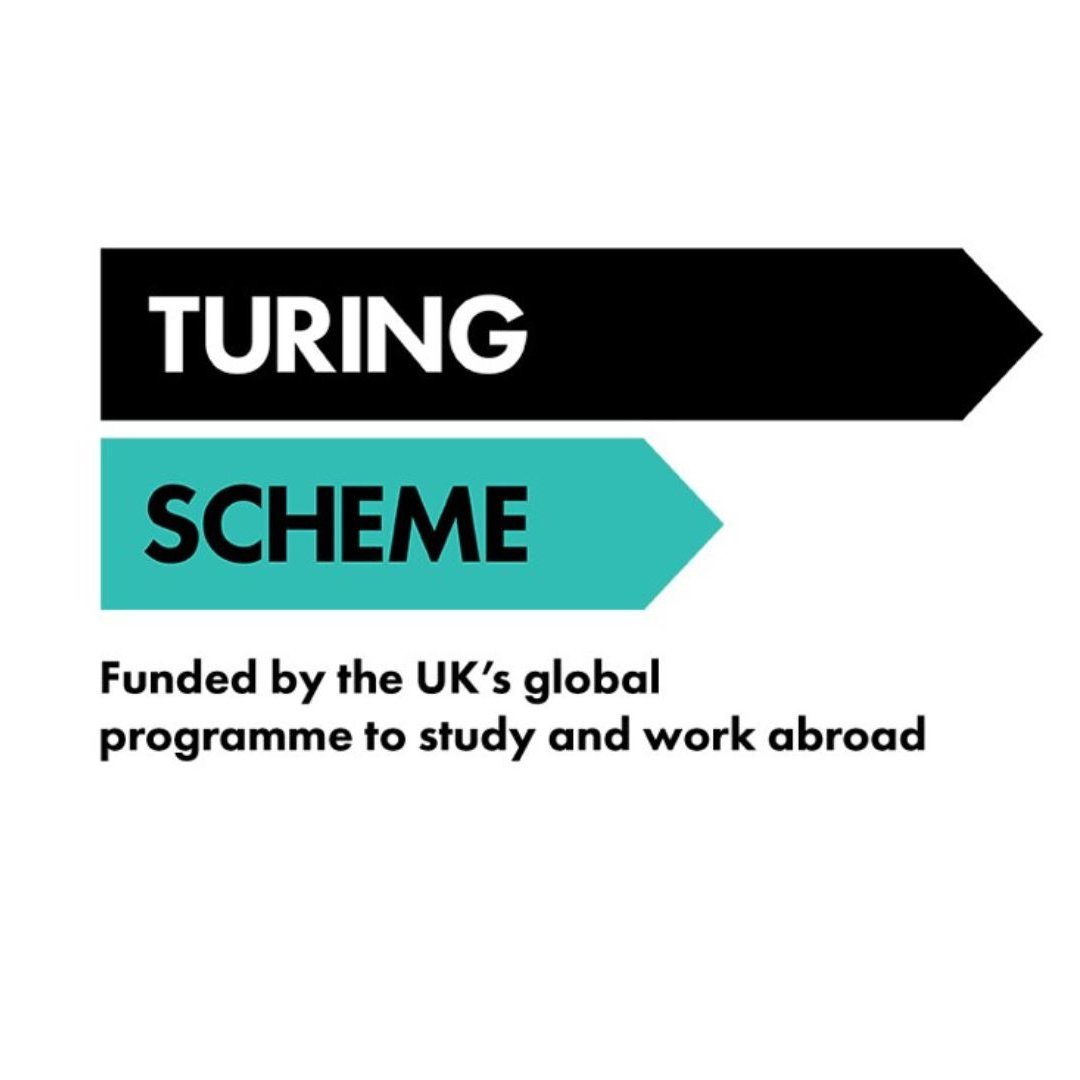
What is the Turing Scheme?
The Turing Scheme, named after the legendary British mathematician and computer scientist Alan Turing, represents a significant initiative in the realm of international education. Known for his ground-breaking contributions to computer science and artificial intelligence, as well as his critical role in breaking the Enigma code during World War II, Turing's legacy continues to inspire new generations.
Launched by the UK government as a replacement for the Erasmus+ program following Brexit, the Turing Scheme aims to provide students with opportunities to study and work abroad, fostering international collaboration and enriching educational experiences. By honouring Turing’s innovative spirit, the scheme underscores the importance of education in shaping a better, more connected world.
Key Features of the Turing Scheme
- Global Opportunities:
- Unlike Erasmus+, which primarily focused on Europe, the Turing Scheme supports international mobility, allowing students to go to countries around the world for educational purposes.
- Funding for Students:
- The scheme provides funding to students participating in study or work placements abroad. This funding can cover travel costs, living expenses, and other associated costs, making international opportunities more accessible.
- Higher Education Focus:
- The Turing Scheme is primarily aimed at higher education students, including those in universities and colleges across the UK. However, it also supports students in further education and certain vocational training programs.
- Inclusive Approach:
- The program emphasizes inclusivity, aiming to ensure that students from diverse backgrounds, including those from disadvantaged communities, have access to international experiences.
- Partnerships and Collaborations:
- Educational institutions in the UK can apply for funding to support student placements. They are encouraged to establish partnerships with international organizations and institutions to facilitate these opportunities.
Goals of the Turing Scheme
- Enhance Employability: By providing students with international experiences, the scheme aims to equip them with skills and perspectives that enhance their employability in a global job market.
- Foster Cultural Exchange: The Turing Scheme encourages cultural understanding and exchange by allowing students to immerse themselves in different cultures and educational environments.
- Support International Education: It aims to maintain the UK’s position as a leading destination for international education and to foster global partnerships in research and innovation.
The Turing Scheme represents the UK’s commitment to promoting international education and mobility for students following Brexit. By providing funding and support for global placements, it aims to create enriching experiences that benefit students academically and personally.
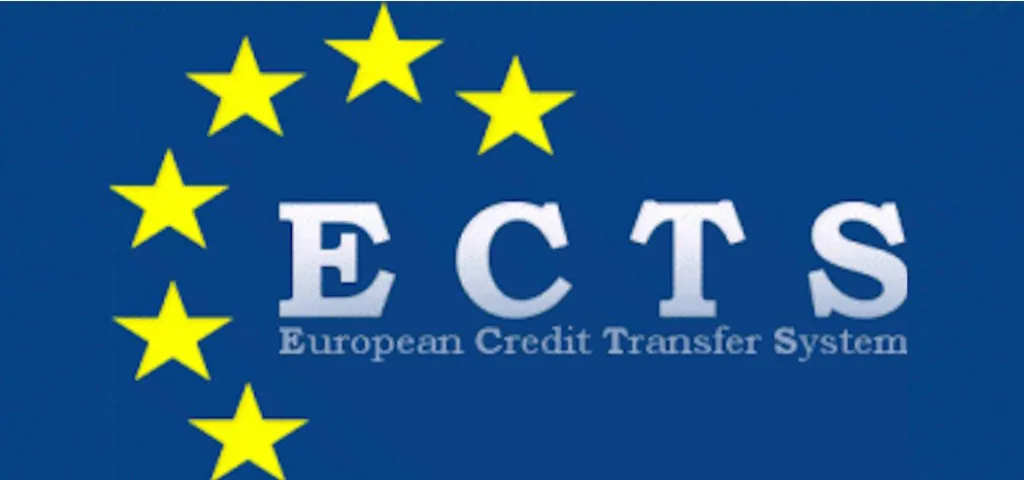
European Credit Transfer and Accumulation System
The European Credit Transfer and Accumulation System (ECTS) is a vital tool that facilitates student mobility and academic recognition across Europe. If you’re considering studying abroad or want to understand how credits work in different universities, here’s a simplified overview of ECTS.
What is ECTS?
1. Credit System
ECTS is designed to standardize how academic work is measured. Here’s how it works:
- Credit Allocation: One full academic year typically equals 60 ECTS credits. Each credit represents about 25 to 30 hours of student work, which includes attending classes, studying, and completing assignments.
2. Transferable Credits
One of the standout features of ECTS is its ability to make academic credits transferable:
- Easy Mobility: Students can study in different countries or switch universities without losing their credits. This means you can explore new cultures and educational environments while still progressing toward your degree.
3. Focus on Learning Outcomes
ECTS emphasizes what students learn:
- Achievement-Based: Credits are awarded based on the knowledge and skills you acquire, rather than just the time spent in class. This ensures that your achievements are recognized no matter where you study.
Why is ECTS Important?
1. Student Mobility
ECTS encourages students to take advantage of study abroad opportunities. It provides a clear pathway for transferring credits, making it easier to gain international experience.
2. Lifelong Learning
The system supports continuous education. You can accumulate and transfer credits throughout your life, allowing for ongoing personal and professional development.
3. Collaboration Between Institutions
ECTS fosters partnerships between universities. This encourages joint programs and shared curricula, enhancing the quality and variety of educational offerings.
Benefits of ECTS
- Accessibility: Students can move between institutions more easily, opening doors to diverse educational experiences.
- Employability: Graduates with international experience are often more appealing to employers, as they bring valuable skills and adaptability.
- Quality Assurance: ECTS helps maintain consistent educational standards across different universities.
- Transparency: The standardized system builds trust between institutions, simplifying international collaboration.
The European Credit Transfer and Accumulation System (ECTS) plays a crucial role in enhancing the educational experience across Europe. By making it easier for students to study abroad and ensuring their achievements are recognized, ECTS helps shape a more interconnected and flexible academic environment.
SEND Facilities in Spain: Supporting Students with Special Educational Needs
In recent years, Spain has made significant strides in creating inclusive educational environments for students with Special Educational Needs and Disabilities (SEND). With a commitment to ensuring that all students receive a quality education tailored to their individual needs, various facilities and resources have been established across the country.
Special Educational Needs and Disabilities encompass a wide range of conditions, including learning disabilities, physical disabilities, sensory impairments, and emotional or behavioural challenges. In Spain, the educational system is designed to be inclusive, promoting the idea that every child deserves the opportunity to learn and thrive.
Key Features of SEND Facilities
- Specialized Schools:
- Spain has a variety of specialized schools that cater specifically to students with SEND. These schools provide tailored curricula and support services, ensuring that students receive the individualized attention they need to succeed.
- Resource Centres:
- Many regions in Spain have established resource centres that offer additional support to students with SEND. These centres often provide assessment services, therapy, and training for teachers to enhance their ability to support students with diverse needs.
- Mainstream School Support:
- In addition to specialized institutions, many mainstream schools in Spain have integrated support systems for students with SEND. This includes having specialized educators, support staff, and modified curricula to accommodate various learning styles.
- Therapeutic Services:
- SEND facilities often include access to therapeutic services such as speech therapists (Logopedia), occupational therapy, and psychological support. These services are essential for addressing the specific challenges that students may face.
- Parental Involvement:
Many SEND facilities emphasize the importance of parental involvement in the educational process. Workshops and support groups for parents help them navigate the challenges of raising a child with special needs and provide valuable resources for advocacy.
Benefits of SEND Facilities
- Personalized Learning: SEND facilities offer tailored educational experiences that address individual learning needs, enabling students to progress at their own pace.
- Inclusion: By providing support in mainstream settings, students with SEND can learn alongside their peers, fostering social interactions and friendships.
- Holistic Development: Comprehensive support services, including therapy and counselling, contribute to the overall well-being of students with SEND.
How to Access SEND Facilities in Spain
Families seeking SEND support for their children should start by contacting their local education authority or the school administration. They can provide information on available resources, specialized schools, and assessment services in the area. Additionally, there are numerous advocacy organizations that offer guidance and support for families navigating the educational landscape.
Spain's commitment to supporting students with Special Educational Needs and Disabilities is evident through its growing network of SEND facilities. By providing specialized resources and fostering inclusive environments, these facilities help ensure that every child has the opportunity to succeed in their educational journey.
Steps to Take Before Moving
- Research Schools:
- Look into schools in the area you’re considering moving to. Contact them to learn about their SEND programs, support staff, and facilities.
- Consult Local Authorities:
- Reach out to the local education authority for information on available SEND resources, assessments, and legal rights for your children.
- Connect with Local Support Groups:
- Joining local support groups or online communities can provide valuable insights from other parents who have navigated the system. They can share their experiences and offer advice.
- Language Considerations:
- Depending on your children’s needs, consider whether language support will be necessary. Some schools offer bilingual education or additional language assistance for non-Spanish speakers.
Spain is increasingly committed to inclusive education and offers various facilities to support children with SEND. By researching and reaching out to schools and local authorities, you can ensure that your children will have the resources they need to thrive. If you have specific questions or need more detailed information, feel free to ask! Your family’s educational journey in Spain can be a rewarding experience.
Is there an index of SEND schools in Spain?
Whilst there isn’t a single comprehensive index of SEND schools in Spain, there are several resources you can use to find specialized schools and services for children with Special Educational Needs and Disabilities (SEND).
Here are some ways to locate SEND schools in Spain:
1. Regional Education Authorities
- Each autonomous community in Spain has its own education authority, which can provide information about specialized schools in your area. You can visit their websites or contact them directly for guidance on available facilities and resources.
2. Local Support Organizations
- Organizations dedicated to supporting families of children with SEND often have lists or directories of specialized schools. Examples include:
- FUNDACIÓN ASPACE: Focuses on supporting individuals with cerebral palsy and other disabilities.
- Plena Inclusión: Represents the interests of people with intellectual disabilities and their families.
3. Online Directories
- Websites such as Escuelas Inclusivas provide information on inclusive education and can help you find schools that cater to children with SEND.
4. Networking with Other Parents
- Joining online forums or local support groups can be invaluable. Other parents can share their experiences and recommendations for schools that have been beneficial for their children.
5. Specialized Educational Consultants
- Consider hiring an educational consultant who specializes in SEND. They can provide personalized recommendations based on your children’s specific needs and help you navigate the Spanish education system.
Is autism recognised in the Spanish education system?
Spain's education system is dedicated to providing inclusive opportunities for children with special educational needs (SEN), including those with autism spectrum disorder (ASD). Recognising the importance of catering to the individual needs of each student, the country has made significant strides in creating a supportive educational environment for children on the autism spectrum. If you're a parent or guardian of a child with autism in Spain or simply interested in the country's approach to inclusive education, below is an overview of how autism is acknowledged and managed within the Spanish education system.
Autism in the Spanish Education System
In Spain, autism is officially recognized as a special educational need, categorized under the "necesidades educativas especiales" (special educational needs) category. This implies that children with autism, along with individuals facing other learning challenges or disabilities, have the right to access tailored support such as specialized teaching and necessary resources to excel in their educational journey. From specialised schools to personalised learning plans, the Spanish education system is structured to provide various levels of support to ensure that students with autism can thrive in a learning environment that meets their specific needs.
Legal Framework: Inclusion is Key
The Spanish education system is governed by laws such as the Ley Orgánica de Derecho a la Educación (Organic Law on the Right to Education) and the Ley Orgánica de la Educación (Organic Law on Education), highlighting the significance of inclusive education. This means children with autism are encouraged to learn in mainstream schools alongside their typically developing peers whenever possible. The aim is to promote integration, diminish stigmas, and ensure equitable opportunities for every student.
Two key pieces of legislation guide this approach:
- Ley Orgánica de Derecho a la Educación (LODE) (Organic Law on the Right to Education) https://www.boe.es/eli/es/lo/1985/07/03/8
- Ley Orgánica de la Educación (LOE) (Organic Law on Education) BOE-A-2006-7899 Ley Orgánica 2/2006, de 3 de mayo, de Educación.
These laws guarantee that children with disabilities, including those with autism, have the right to an education in the least restrictive environment. This is known as the principle of inclusiveness, where children are integrated into regular classrooms with appropriate support systems to help them succeed academically and socially.
Additionally, the General Law on the Rights of Persons with Disabilities (Ley General de los Derechos de las Personas con Discapacidad) ensures that children with ASD have access to the same educational opportunities as their peers, with necessary adjustments and support in place.
Specialised Education vs. Inclusive Education
While inclusion in mainstream schools is the primary approach, the Spanish education system recognises that some children with autism may need more specialised support.
1. Specialised Schools (Centros de Educación Especial)
For children with significant needs, there are specialised schools that cater to students with autism and other developmental disabilities. These schools offer tailored programs with smaller class sizes, specialised staff, and therapy services. The curriculum is adapted to focus on life skills, social integration, and therapeutic interventions.
At these schools, children benefit from:
- Speech therapy to address communication difficulties
- Occupational therapy for motor skills and sensory integration
- Behavioural support to manage challenges like anxiety, social difficulties, or repetitive behaviours
These schools are an option for students who may not be able to thrive in a mainstream classroom, but they still provide an educational environment that is rich in support and individualised care.
2. Inclusive Education in Mainstream Schools
Spain also emphasises inclusive education—the idea that children with autism should, whenever possible, be educated alongside their peers in regular schools. In this model, children with autism may attend mainstream schools with additional support.
This could include:
- Special education teachers who work alongside the classroom teacher to provide tailored support.
- Classroom accommodations, such as visual aids, adapted teaching methods, or extra time for assignments.
- Support assistants who help children navigate social situations and manage behaviours.
For example, some schools offer resource rooms or special educational units (aulas de apoyo), where children with autism can receive individualised attention but still participate in regular classes for some subjects.
The Role of Individualised Education Plans (PEI)
An Individualised Education Plan (PEI) is essential for kids with autism. This customised plan describes the child's unique educational requirements and how they will be satisfied. Parents, educators, special education specialists, and other professionals with an interest in the child's education work together to create the PEI.
An individualised education plan often includes:
- Academic goals
- Behavioural support strategies
- Therapy requirements (speech therapy, occupational therapy, etc.)
- Social integration plans
- Modifications or accommodations needed in the classroom (e.g., seating arrangements, additional resources)
By having a PEI in place, children with autism can receive a tailored approach that reflects their strengths and challenges.
Support Services: Therapy and Assistance
In addition to academic support, children with autism in Spain are also entitled to access various therapies and support services, such as:
Speech therapy: Many children with autism struggle with verbal communication, so speech therapy helps develop their language skills.
Occupational therapy helps children improve their fine motor skills, sensory processing, and daily living tasks.
Psychological support: Specialised psychologists and counsellors assist children in managing emotional and behavioural difficulties, fostering emotional regulation and social interaction.
Behavioural interventions: Techniques such as Applied Behaviour Analysis (ABA) may be used to help children with autism develop positive behaviours and reduce challenging behaviours.
Regional Variations
Spain's education system is decentralised, and education policies and services can vary by region, as each autonomous community (region) has its own educational authorities. This means the level of support available for children with autism can differ depending on where you live.
In more urban areas like Madrid, Catalonia, and Andalusia, there tends to be a greater availability of specialised resources, inclusive programs, and therapeutic services. Smaller or rural regions may have fewer specialised schools or programmes but still adhere to national laws promoting inclusion and individualised support.
Parental and Advocacy Support
There are several parent organisations and autism advocacy groups in Spain that provide invaluable support to families. These organisations offer resources, workshops, and counselling to help parents navigate the educational system and advocate for their child’s needs.
Some well-known autism advocacy groups in Spain include:
- Autismo España: The leading national organisation for autism, providing information and support to families. Autismo España - TEA, Trastorno del espectro autista
- Federación Autismo Madrid: Focuses on supporting families and raising awareness of autism in the Madrid region. Autismo Madrid
- Autisme Catalunya: offers guidance and resources for families in Catalonia. La Federació - Federació Autisme Catalunya
These organisations can assist families in ensuring that their child’s educational rights are upheld and provide a network of support and advice.
A commitment to inclusion
The Spanish education system recognises the importance of providing equal educational opportunities for all children, including those with autism. Whether it's through inclusive classrooms, specialized schools, or personalized education plans, there is a collective effort to guarantee that children with autism receive the necessary resources and assistance to thrive academically and socially.
Because of Spain's dedication to inclusion, autism is not only acknowledged but also actively supported within the educational system, even though regional variations may have an impact on the precise services offered. In Spain, parents of autistic children can rest easy knowing that there is a system in place to support their child's development in a setting catered to their particular need.
Schools in and around the Guadalhorce Valley
For the nearest schools located in the area you're interested in moving to, please visit the Andalucian Town Hall's website here: Consejería de Educación, Cultura y Deporte. Junta de Andalucía
You can also find information about local schools and private English schools by reading through our Local Area Guides.
British Schools on The Costa Del Sol
Here's a list of British and International Schools available on the Costa del Sol:
St. Anthony's College
The oldest British school on the Costa del Sol was established in 1968 and is called St. Anthony's College.
Students from a range of countries and cultures, ages three to eighteen, can take the Spanish ESO and Bachillerato courses in addition to the British National Curriculum.
Address: Camino de Coin Km 5,25 Mijas Costa - Málaga 29649 is the address of the school.
Phone: +34 952 473 166 email: [email protected]
Website: www.stanthonyscollege.com/
The British College
The college is situated on the foothills of the Benalmádena mountains, in the private and tranquil urbanisation known as "Torremuelle," in between Benalmadena and Fuengirola, directly on the magnificent Benalmádena shore.
Pre-Nursery (ages 1 and 2), Nursery and Reception Education (ages 3 and 4), Primary School (ages 5 to 11), Secondary School (ages 11 to 16), and AS/A Levels are among the programs they offer.
Address: The British College of Benalmádena, Urb. Torremuelle, C/Paseo del Genil s/n 29630, Benalmádena, Málaga
Phone: +34 952 44 22 15 email: [email protected]
Website: www.thebritishcollege.com/
Benalmadena International College
A contemporary and vibrant British school, Benalmadena International College is situated in Nueva Torrequebrada, close to the N340 route that connects Benalmádena Costa and Fuengirola.
A group of British inspectors from the British Council have formally examined and authorised the college (certificate number 2011/38). Additionally, the institution is authorised to teach students up to university admission level by its registration and licence with the Spanish Education Authority (centre number 29001078).
Address: Calle Catamarán s/n, Nueva Torrequebrada, 29630 Benalmádena Costa
Phone: +34 952 561 6666 email: [email protected]
Website: www.benalmadenainternationalcollege.com/
Colegio Internacional Torrequebrada
Spanish and English is taught at Colegio Internacional Torrequebrada (CIT), a private multilingual school. The school provides preschool, elementary, and secondary instruction. Note that secondary education is primarily taught in Spanish, whereas primary education is provided in English.
Address: 7-11, Calle Ronda del Golf Este, Urbanización Torrequebrada, 29639 Benalmádena, Malaga
Phone: +34 932 576 065 email: [email protected]
Website: www.colegiotorrequebrada.com/
FAQs
What are the different types of schools in Spain?
Spain offers state schools (colegios públicos), semi-private schools (concertados), and fully private schools (colegios privados). There are also international schools, which follow UK, IB, or other foreign curricula.
Will my child need to speak Spanish to attend a state school?
Yes, as lessons are taught in Spanish (or a regional language, depending on the area). Some schools offer additional language support for foreign students, but younger children tend to adapt more quickly.
What age does school start and finish in Spain?
Education is compulsory from ages 6 to 16. Many children attend pre-school (infantil) from age 3, and after 16, they can continue to Bachillerato (A-level equivalent) or vocational training.
Is school free in Spain?
State schools are free, but parents may need to pay for books, materials, and school meals. Concertado schools (partially funded by the government) may charge small fees, while private and international schools have full tuition fees.
How does the Spanish school calendar differ from the UK?
Spanish schools usually run from mid-September to late June, with long summer holidays (about 10-12 weeks). There are also Christmas, Easter, and local holiday breaks.
What are Spanish school hours like?
This varies by region, but many primary schools run from 9 am to 2 pm or 9 am to 5 pm (with a long lunch break). Some secondary schools have a continuous 8 am to 2:30 pm schedule.
What are the class sizes like in Spanish schools?
In state schools, class sizes are usually between 20-30 students, though this varies by region and school.
Will my child need vaccinations or medical checks to enrol?
Yes, most schools require proof of up-to-date vaccinations and a residence certificate (empadronamiento) from your local town hall. Some may request a health check.
Can my child study in English?
Some international schools follow a UK curriculum, while bilingual schools teach in both English and Spanish. However, most state schools teach in Spanish (or Catalan, Basque, or Galician, depending on the region).
How does the grading system work?
Grades are usually out of 10, with a 5 being a pass. Bachillerato and university entrance exams (Selectividad) are more complex but follow a scale up to 14 points.
Can my child transfer to a UK university after studying in Spain?
Yes, but they may need to take additional exams (such as A-Levels or UK university entrance exams) if they follow the Spanish curriculum. International schools offering A-Levels or IB make UK university entry easier.
How do I enrol my child in a Spanish state school?
You need to apply through the local education authority, usually in March/April, providing proof of residence, birth certificates, and vaccination records. Places in popular schools may be limited.

